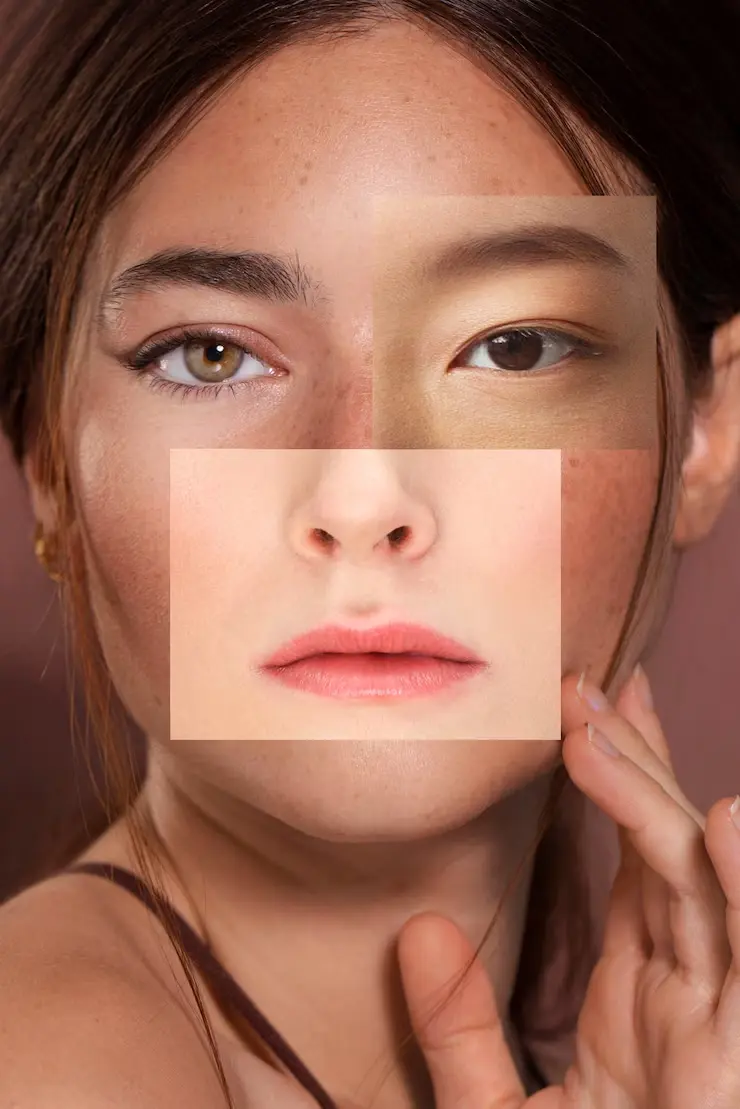A large percentage of both men and women in the Arab world suffer from skin pigmentation—one of the most common skin problems that affect appearance and self-confidence. In this article, we shed light on the definition of pigmentation, its types, causes, prevention methods, and medically approved treatments, along with effective, tested products.
What is Skin Pigmentation?
Definition of Skin Pigmentation
Skin pigmentation refers to disorders in the distribution of melanin pigment, which lead to the appearance of dark or uneven-colored spots on the skin. These may appear on the face, hands, shoulders, or any area exposed to triggering factors like the sun or inflammation.
The Difference Between Superficial and Deep Pigmentation
- Superficial pigmentation: Located near the outer layer of the skin (stratum corneum) and is usually easier to treat.
- Deep pigmentation: Extends into deeper layers such as the dermis and may require advanced interventions like laser or deep peeling.
Causes of Skin Pigmentation
Sun Exposure
Excessive exposure to sunlight, especially without sunscreen, stimulates pigment-producing cells to generate more melanin, causing brown or dark spots known as sunspots.
Hormonal Changes
These include causes such as pregnancy, taking birth control pills, or thyroid disorders. Such changes may lead to melasma, especially on the face and cheeks.
Skin Inflammation and Wounds
Pimples, scratches, or burns can leave behind post-inflammatory hyperpigmentation, which is common after acne or eczema.
Use of Certain Medications or Cosmetics
Some perfumes, creams containing irritating substances, or medications like epilepsy drugs or antibiotics may cause photosensitivity leading to pigmentation.
Types of Skin Pigmentation
Melasma
Appears as brown or gray patches on the face, more common among women, especially during pregnancy or after taking hormones.
Freckles
Small brown dots that appear as a result of sun exposure and are more noticeable in people with fair skin.
Post-Acne Pigmentation
Acne may leave dark spots after healing, especially if the pimples are picked at or not properly treated.
Sunspots (Lentigines)
Also called “age spots,” these result from years of sun exposure and often appear in exposed areas like the hands and face.
How to Prevent Skin Pigmentation
Use Sunscreen Daily
Choose a sunscreen with SPF 50+ and use it daily—even on cloudy days—as it’s one of the most important preventive steps.
Avoid Direct Sun Exposure
Especially between 10 a.m. and 4 p.m., when UV rays are strongest.
Daily Skincare Routine
Use moisturizing and brightening products that contain active ingredients to help reduce the appearance of spots.
Recommended Products:
- Toniderma Brightening Face Cream: Helps reduce dark spots and even out skin tone with regular use.
- Toniderma Moisturizing Body Milk: Maintains skin hydration and reduces irritation that may lead to pigmentation.
- Toniderma Vitamin C Serum: A powerful antioxidant that promotes skin cell renewal and helps reduce pigmentation marks.
Treatments for Skin Pigmentation
Topical Creams (e.g., Hydroquinone and Tretinoin)
These are used under medical supervision to reduce melanocyte activity. They are recommended for short-term use only to avoid side effects.
Chemical Peels
Used to remove superficial skin layers, improving superficial pigmentation, especially with acids like glycolic or salicylic acid.
Laser Pigmentation Treatments
Techniques like Q-switched Nd:YAG laser are among the effective options for eliminating deep pigmentation. However, they must be done by a qualified doctor to avoid complications.
Natural Remedies and Herbal Treatments
Examples include aloe vera gel, licorice oil, or green tea extract. Although their effectiveness is limited, they are suitable for light spots and sensitive skin.
When Should You See a Doctor?
Signs That Require Medical Consultation:
- Pigmentation that changes rapidly in size or color.
- Lack of response to at-home treatments.
- Appearance of spots accompanied by symptoms like itching or bleeding.
Accurate Diagnosis Before Starting Treatment
Doctors may use tools like skin analyzers or Wood’s Lamp examination to determine the depth of pigmentation, which helps choose the appropriate treatment.
Frequently Asked Questions About Skin Pigmentation
Can pigmentation be completely eliminated?
In many cases, yes, but it depends on the type and depth of the pigmentation. Some cases may take longer and require a combination of treatments.
What is the best treatment method for each skin type?
- Oily skin: Tends to respond well to peels and serums.
- Dry or sensitive skin: Requires gentle treatment like natural creams and intensive moisturizing.
Are home remedies safe to use?
Yes, but only if you choose non-irritating ingredients and test them on a small skin patch before full use.
To access effective and safe products for treating skin pigmentation, visit Sandra Derma, where you can find trusted products like brightening face cream, body moisturizing cream, and vitamin C serum—all designed to help even skin tone and reduce pigmentation in a safe and measured way.

